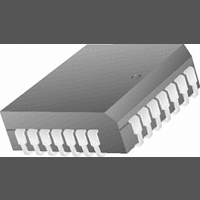CS5102A-BL Cirrus Logic Inc, CS5102A-BL Datasheet - Page 17

CS5102A-BL
Manufacturer Part Number
CS5102A-BL
Description
A/D Converter (A-D) IC
Manufacturer
Cirrus Logic Inc
Specifications of CS5102A-BL
Input Channels Per Adc
2
Mounting Type
Surface Mount
No. Of Channels
2
Power Rating
44mW
Supply Voltage Min
4.5V
Peak Reflow Compatible (260 C)
No
Sample Rate
20kSPS
Supply Voltage Max
5.5V
Lead Free Status / RoHS Status
Contains lead / RoHS non-compliant
Available stocks
Company
Part Number
Manufacturer
Quantity
Price
Part Number:
CS5102A-BL
Manufacturer:
CRYSTAL
Quantity:
20 000
Company:
Part Number:
CS5102A-BLZ
Manufacturer:
Cirrus Logic Inc
Quantity:
10 000
Part Number:
CS5102A-BLZ
Manufacturer:
CRYSTAL
Quantity:
20 000
4. FUNCTIONAL DESCRIPTION
Monolithic design and inherent sampling architec-
ture make the CS5101A and CS5102A extremely
easy to use.
4.1
A falling transition on the HOLD pin places the in-
put in the hold mode and initiates a conversion cy-
cle. The charge is trapped on the capacitor array
the instant HOLD goes low. The device will com-
plete conversion of the sample within 66 master
clock cycles, then automatically return to the track
mode. After allowing a short time for acquisition,
the device will be ready for another conversion.
In contrast to systems with separate track-and-
holds and A/D converters, a sampling clock can
simply be connected to the HOLD input. The duty
cycle of this clock is not critical. The HOLD input is
latched internally by the master clock, so it need
only remain low for 1/f
than the minimum conversion time minus two mas-
ter clocks or an additional conversion cycle will be
initiated with inadequate time for acquisition. In
Free Run mode, SCKMOD = OUTMOD = 0, the
device will convert at a rate of CLKIN/80, and the
HOLD input is ignored.
As with any high-resolution A-to-D system, it is rec-
ommended that sampling is synchronized to the
master system clock in order to minimize the ef-
fects of clock feed through. However, the
CS5101A and CS5102A may be operated entirely
asynchronous to the master clock if necessary.
4.2
Upon completing a conversion cycle the CS5101A
and CS5102A immediately return to the track
mode. The CH1/2 pin directly controls the input
switch, and therefore directly determines which
channel will be tracked. Ideally, the CH1/2 pin
should be switched during the conversion cycle,
thereby nullifying the input mux switching time, and
guaranteeing a stable input at the start of acquisi-
tion. If, however, the CH1/2 control is changed dur-
ing the acquisition phase, adequate coarse charge
and fine charge time must be allowed before initi-
ating conversion.
When the CS5101A or the CS5102A enters track-
ing mode, it uses an internal input buffer amplifier
DS45F6
Initiating Conversions
Tracking the Input
clk
+ 20 ns, but no longer
to provide the bulk of the charge on the capacitor
array (coarse-charge), thereby reducing the cur-
rent load on the external analog circuitry. Coarse-
charge is internally initiated for 6 clock cycles at the
end of every conversion. The buffer amplifier is
then bypassed, and the capacitor array is directly
connected to the input. This is referred to as fine-
charge, during which the charge on the array is al-
lowed to accurately settle to the input voltage (see
Figure 12).
With a full-scale input step, the coarse-charge in-
put buffer of the CS5101A will charge the capacitor
array within 1% in 650 ns. The converter timing al-
lows 6 clock cycles for coarse charge settling time.
When the CS5101A switches to fine-charge mode,
its slew rate is somewhat reduced. In fine-charge,
the CS5101A can slew at 2 V/µs in unipolar mode.
In bipolar mode, only half the capacitor array is
connected to the analog input, so the CS5101A
can slew at 4V/µs.
With a full-scale input step, the coarse-charge in-
put buffer of the CS5102A will charge the capacitor
array within 1% in 3.75 µs. The converter timing al-
lows 6 clock cycles for coarse charge settling time.
When in fine-charge mode, the CS5102A can slew
at 0.4 V/µs in unipolar mode; and at 0.8 V/µs in bi-
polar mode.
Acquisition of fast slewing signals can be hastened
if the voltage change occurs during or immediately
following the conversion cycle. For instance, in
multiple channel applications (using either the de-
vice's internal channel selector or an external
MUX), channel selection should occur while the
CS5101A or the CS5102A is converting. Multiplex-
er switching and settling time is thereby removed
from the overall throughput equation.
If the input signal changes drastically during the
acquisition period (such as changing the signal
source), the device should be in coarse-charge for
an adequate period following the change. The
CS5101A and CS5102A can be forced into coarse-
charge by bringing CRS/FIN high. The buffer am-
plifier is engaged when CRS/FIN is high, and may
be switched in any number of times during track-
ing. If CRS/FIN is held low, the CS5101A and
CS5102A will only coarse-charge for the first 6
clock cycles following a conversion, and will stay in
CS5101A CS5102A
17


















